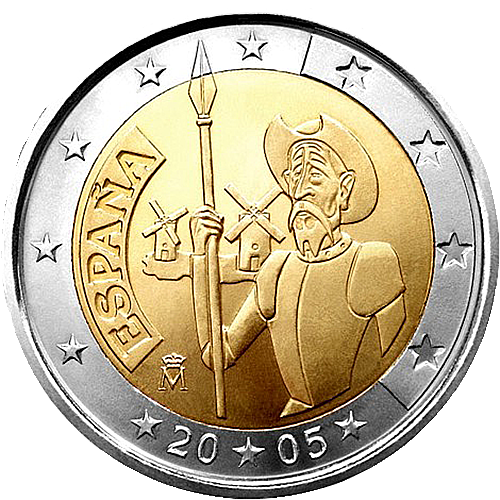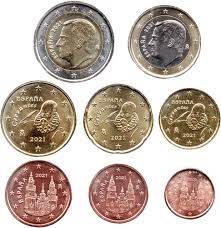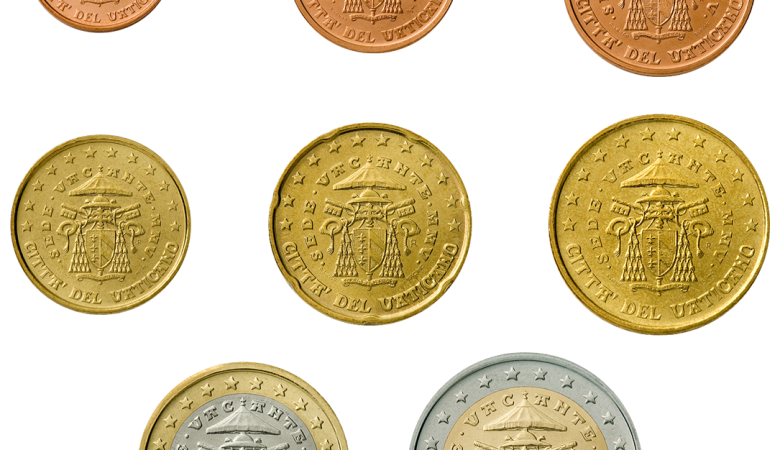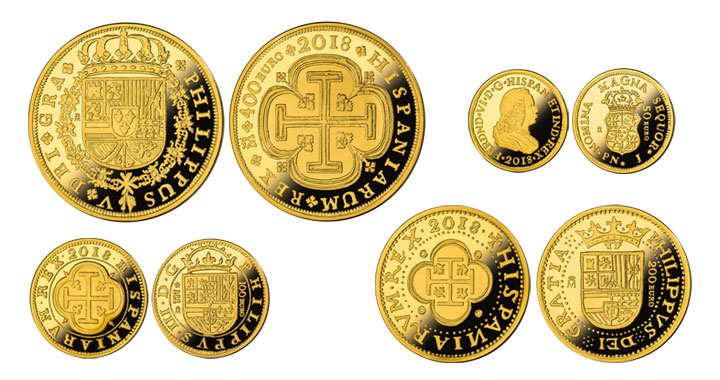What are Spanish coins called?
The Euro (€), also known as EUR, is the official unit of money in Spain. There are 100 pennies in one euro. Like many other European nations, Spain also has coins in circulation that are worth cents and euros. The coins come in a variety of values and have classic European motifs and historical characters on them.
The following Spanish Euro coin denominations are typical:
1 Euro (€1)
2 Euros (€2)
1 cent (€0.01)
2 cents (€0.02)
5 cents (€0.05)
10 cents (€0.10)
20 cents (€0.20)
50 cents (€0.50)
Due to their distinctive shapes and sizes, these coins are widely used in Spain for everyday transactions. Spain accepted the Euro as its official currency in 2002, replacing the peseta, and the Euro banknotes and coins were first made available in that nation.
History:
Spanish coins have a long history that reflects the many civilizations and cultures that have impacted the Iberian Peninsula over the years.
Here is a synopsis of how Spanish coins have changed over time:
Ancient and Classical Periods: On the Iberian Peninsula, ancient civilizations like the Iberians and Celts utilized coins. They struck their own coinage with influences from Greek and Roman styles.
Roman Era: Spain played a significant role in the Roman Empire, and Roman coinage were widely used in the area. Under Roman dominance, numerous cities and areas produced their own coins.
The Visigoths, a Germanic race, formed their kingdom in some areas of the Iberian Peninsula following the fall of the Western Roman Empire. They produced their own coins, frequently using Roman designs as a guide.

Islamic Period: New currency systems based on Islamic patterns and inscriptions were introduced with the Islamic conquest of the Iberian Peninsula in the 8th century.
Castile, Aragon, Leon, and Catalonia were among the kingdoms who started minting their own coins as Christian nations started to retake the Iberian Peninsula from Islamic dominion. These coins included a coat of arms, the names of the rulers, and local symbols.
Spanish Empire: Spain accumulated enormous wealth from her colonies in the Americas during the age of exploration and colonization. This flood of precious metals, especially silver and gold, resulted in the production of a large number of coins, including the well-known “pieces of eight” (reales), which were used and traded all over the world.
Modern Period: Spain saw several political and economic upheavals in the 19th and 20th centuries that resulted in the creation of contemporary coinage systems and the introduction of the peseta as the nation’s official currency. Up until the 2002 introduction of the Euro (EUR), the peseta was still in use.
Spain switched from the peseta to the Euro (EUR) and now uses it as its official currency. The Fábrica Nacional de Moneda y Timbre, or Royal Mint of Spain, is in charge of creating the nation’s coins and banknotes.
What is the famous Spanish coin?
One of the most famous and historically significant Spanish currencies is the “Spanish Real”, especially the “8” or “Spanish Dollar”, which has been recognized and influential widely around the world.
Spanish Dollar (8 coins):
The Spanish dollar, also known as the “eight” (or “peso de ocho” in Spanish), was a silver coin minted by the Spanish Empire in the late 15th century. It was one of the world’s first currencies and were widely used in international trade during the Age of Discovery and into the 19th century.
A coin is a large piece of silver, often divided into smaller denominations, and is prized for its consistent silver content and uniformity, making it ideal for international transactions.
Escudo Spain:
The Spanish escudo is another important Spanish currency, which has come in many different denominations and designs over the centuries. It was originally a gold coin but was changed to silver in the 17th century.
The design evolved over time, featuring various Spanish kings and important symbols of the Spanish Empire.
These coins are symbolic of Spain’s importance as a colonial power in the age of exploration and the immense wealth it accumulated through its colonies, especially especially in the Americas.
The “eight coin” played an important role in trade, forming the basis of many monetary systems around the world and influencing the development of currencies in the Americas, including the US dollar .

While these specific coins have historical significance, it is important to note that Spain has a long and diverse monetary history, with many different denominations and designs reflecting its developments. of political, economic and cultural contexts over the centuries.
Conclusion:
No unique or well-known term or idea known as “spin coins” exists in relation to money or numismatics. I would be pleased to help you further and provide pertinent information if you could give me additional context or explain what you mean when you say “spin coins.”
The design evolved over time, featuring various Spanish kings and important symbols of the Spanish Empire.
These coins are symbolic of Spain’s importance as a colonial power in the age of exploration and the immense wealth it accumulated through its colonies, especially especially in the Americas.





